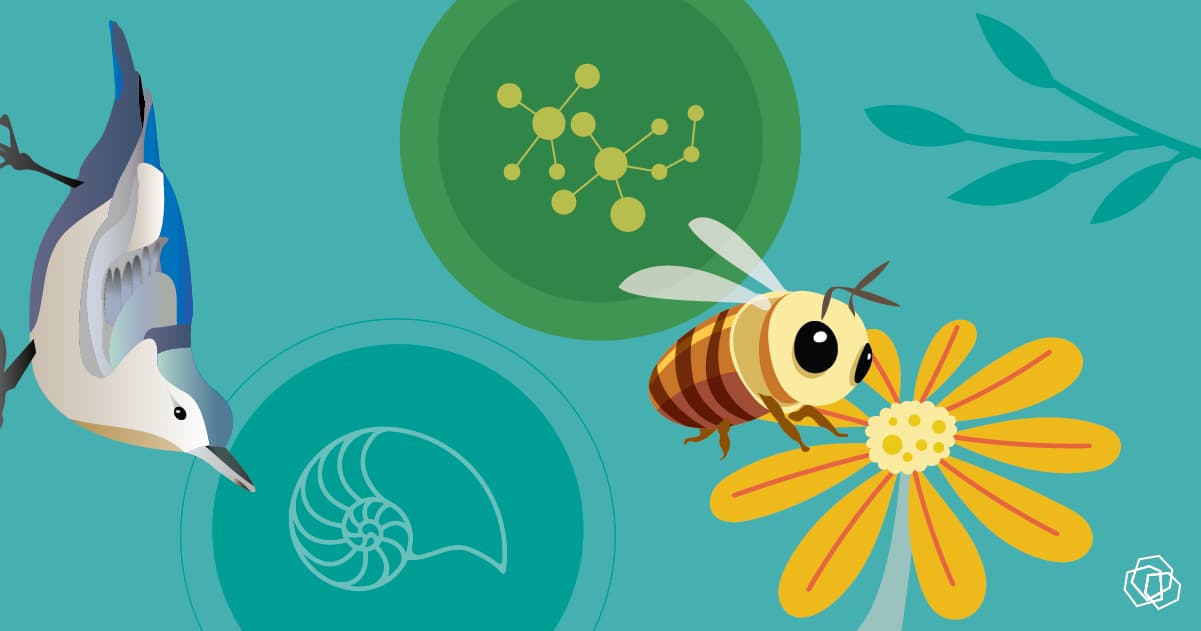
One of my great pleasures at my former job at a zoo was hosting my friend’s industrial design biomimicry students. I would show them around and call out animal information that might help spark a design project. It’s not as easy as you think to be bioinspired. The complicated answer is that inspiration is learned and takes practice. Nature can be a terrific muse for service design, but finding inspiration takes practice opening one’s senses, understanding connections, and a boatload of curiosity. The tools and methods for seeking bioinspiration are maturing, from the online resource library, asknature, to immersive art and science conferences. Working from home during the pandemic, I observed the wondrous array of birdsong on my patio and the dominant behavior of the city pigeon. So how does a pigeon become a how might we? Knowing how to tap into inspiration reveals deep connections and novel metaphors—just the thing that helps designers innovate. Lately, I’ve been especially excited about some of the inspiration nature can provide service design. Here are some musings and activities to support a service design practitioner to become bioinspired.
The fur of a sloth is a complex ecosystem of diverse microorganisms. The sloths have evolved and survived through a mutualistic relationship between moths and algae that live in their fur. When sloths descend to the forest floor to defecate, the moths travel with them and lay eggs in their dung, where their larvae find their sole nutrients. The moths return to find a new sloth to call home. The moths increase the amount of nitrogen in sloth fur, which allows algae to thrive. The sloths then consume the algae to augment their limited diet.
This excellent example of mutualism is akin to how service designers look at value exchanges between employees, customers, and the business, although perhaps with less dung-related models. A designer has a rich opportunity to push the number of relationships and value exchanges by exploring mutualism and visualizing their systems.
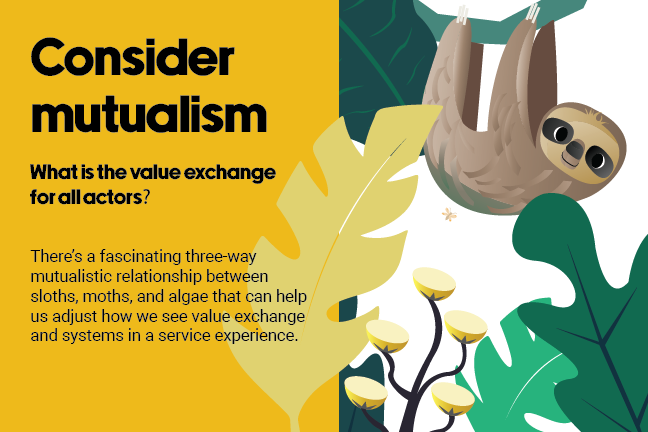
Cooperation is the mantra for animals who form eusocial societies, from the well-known honey bee to one of my favorite animals, the naked mole rat. Eusocial societies are highly complex, with specialized roles—builders, soldiers, suitors, engineers, and more. They do have one goal, and it’s to sustain the livelihood of their queen and brood.
Working with large organizations, we often hear and experience issues with work silos. Marketing feels cut off from IT, and product doesn’t want to work with anyone. A common goal and space to perform work through cross-collaborative teams create ideal ingredients for a design workshop.
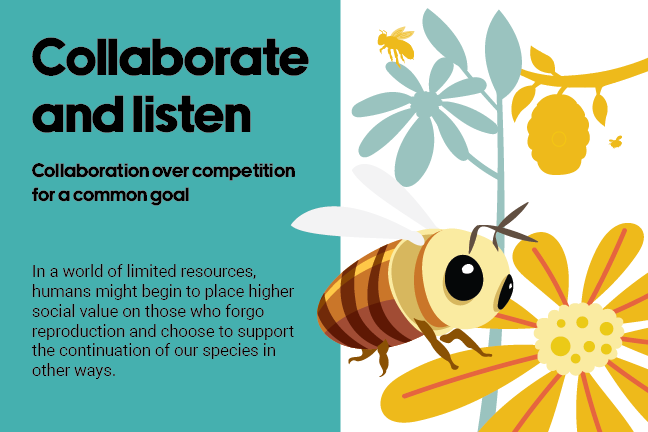
The nuthatch is a small bird with physiological and behavioral traits that allow them to forage upside-down. Researchers think this unique perspective helps them see other snacks missed by other birds. They also hide their food head down, keeping their food stash concealed from the other birds.
One of my favorite prompts is to “flip” your design or to reverse brainstorm an activity. The new angle creates different conversations and at least lets you think about guardrails for “good” design.
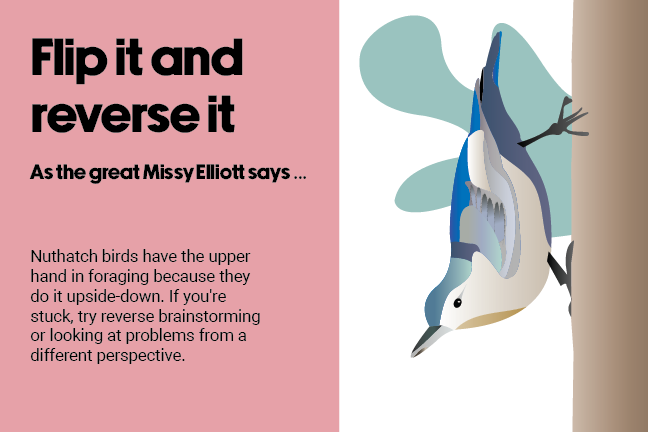
I once saved a baby pigeon nesting on my car’s wheel. I brought it to my porch, named it Pegeen, and took it to the veterinarian the next day. Many years later, I still have a pigeon that comes back to that same spot on my porch and poops. Through research, I did learn that pigeons can locate using magnetosensitivity. While magnetosensitivity may or might not work with retaining customers, I can say without any qualms that designing a great experience will ensure repeat customers.
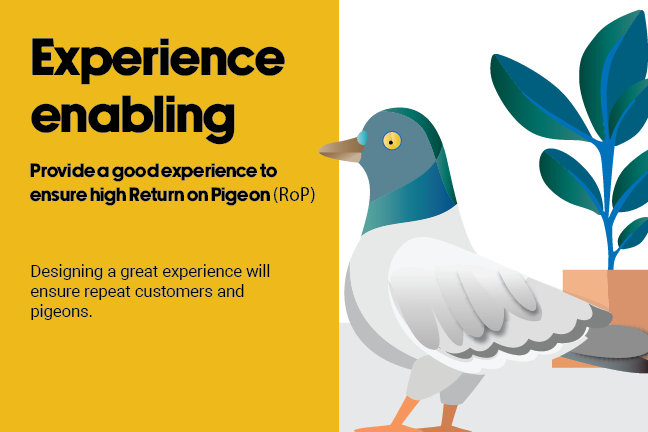
The biomimicry toolbox offers a detailed process of incorporating biology with design and the website, asknature, is a large online resource library for bioinspiration.
Download Your Bioinspiration Prompt Card.
Asknature.org. 2022. Navigating Without Landmarks – AskNature. https://asknature.org/strategy/navigating-without-landmarks/ [Accessed July 2022].
Hitchcockcenter.org. 2022. The sometimes upside-down life of the nuthatch. https://hitchcockcenter.org/earth-matters/the-sometimes-upside-down-life-of-the-nuthatch/. [Accessed July 2022].
Pauli, Jonathan N., et al. “A syndrome of mutualism reinforces the lifestyle of a sloth.” Proceedings of the Royal Society B: Biological Sciences 281.1778 (2014): 20133006.
Wikipedia. 2022. Eusociality. https://en.wikipedia.org/wiki/Eusociality. [Accessed July 2022].